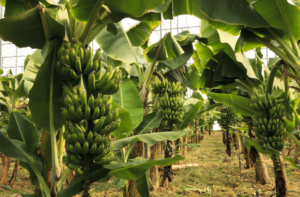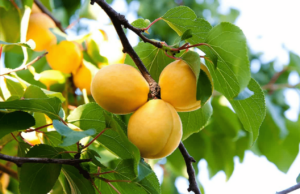10 Creative Garden Design Ideas for Your Outdoor Space
Vertical gardens are a fantastic way to make the most of limited space and create a stunning visual impact. By utilizing wall space, you can transform a plain, boring wall into a lush and vibrant garden. There are many different ways to create a vertical garden, from simple hanging planters to intricate living walls. One popular method is to use a series of stacked planters or shelves to create a tiered effect, allowing you to grow a variety of plants in a small area. Another option is to use a trellis or wire grid system to support climbing plants, creating a beautiful green backdrop.
In addition to being visually striking, vertical gardens also offer practical benefits. They can help to insulate buildings, reducing energy costs, and can even improve air quality by filtering out pollutants. Vertical gardens can also provide habitat for birds and insects, contributing to biodiversity in urban areas. Whether you have a small balcony, courtyard, or even just a blank wall, there are endless possibilities for creating a stunning vertical garden that will bring beauty and life to your outdoor space.
Vertical gardens are an innovative way to bring nature into urban environments and make the most of limited space. By utilizing wall space, you can create a lush and vibrant garden that adds beauty and life to any outdoor area. Whether you choose to use hanging planters, stacked shelves, or a living wall system, the possibilities for creating a stunning vertical garden are endless. Not only do vertical gardens provide visual impact, but they also offer practical benefits such as insulation, air purification, and habitat creation. With a little creativity and some greenery, you can transform any blank wall into a thriving garden that will enhance your outdoor space.
Key Takeaways
- Vertical gardens are a great way to maximize space and create a lush garden on walls and fences.
- Edible landscaping allows you to incorporate fruits, vegetables, and herbs into your garden design for a functional and beautiful space.
- Fairy gardens offer a whimsical and enchanting atmosphere with miniature plants and accessories, perfect for adding a touch of magic to your garden.
- Zen gardens provide a tranquil and peaceful retreat with carefully arranged rocks, sand, and minimalistic plants, perfect for relaxation and meditation.
- Water features such as ponds, fountains, or waterfalls can add a calming and serene element to your garden, creating a peaceful oasis for relaxation.
Edible Landscaping: Incorporating fruits, vegetables, and herbs into your garden design
Edible landscaping is a wonderful way to combine beauty and functionality in your outdoor space. By incorporating fruits, vegetables, and herbs into your garden design, you can create a landscape that not only looks stunning but also provides fresh, homegrown produce. There are countless ways to integrate edible plants into your garden, from planting fruit trees and berry bushes to creating raised beds for growing vegetables and herbs. You can also incorporate edible plants into existing flower beds and borders, adding both visual interest and practical value to your landscape.
In addition to providing fresh, healthy food for you and your family, edible landscaping offers numerous environmental benefits. By growing your own produce, you can reduce your carbon footprint by minimizing the transportation and packaging associated with store-bought food. You can also support local wildlife by providing habitat and food sources for birds, bees, and other beneficial insects. Whether you have a large backyard or just a small patio or balcony, there are endless possibilities for incorporating edible plants into your garden design. With a little planning and creativity, you can create a beautiful and productive landscape that will provide enjoyment for years to come.
Edible landscaping is a fantastic way to combine beauty and functionality in your outdoor space. By incorporating fruits, vegetables, and herbs into your garden design, you can create a landscape that not only looks stunning but also provides fresh, homegrown produce. There are countless ways to integrate edible plants into your garden, from planting fruit trees and berry bushes to creating raised beds for growing vegetables and herbs. In addition to providing fresh, healthy food for you and your family, edible landscaping offers numerous environmental benefits such as reducing your carbon footprint and supporting local wildlife. Whether you have a large backyard or just a small patio or balcony, there are endless possibilities for incorporating edible plants into your garden design. With a little planning and creativity, you can create a beautiful and productive landscape that will provide enjoyment for years to come.
Fairy Gardens: Creating a whimsical and enchanting space with miniature plants and accessories
Fairy gardens are a delightful way to add a touch of whimsy and enchantment to your outdoor space. These miniature gardens are designed to evoke the magical world of fairies, with tiny plants, accessories, and decorations creating an enchanting scene. Creating a fairy garden is a fun and creative project that can be enjoyed by people of all ages. You can use any container or outdoor space to create a fairy garden, from a small pot or planter to a secluded corner of your yard. The key is to use small-scale plants such as succulents, mosses, and miniature flowers, along with charming accessories like tiny houses, fairy figurines, and miniature furniture.
Fairy gardens offer an opportunity for self-expression and imagination, allowing you to create a miniature world that reflects your own personal style and interests. Whether you prefer a woodland theme with rustic accessories or a more whimsical scene with colorful flowers and fairy figurines, the possibilities for creating a unique fairy garden are endless. In addition to being visually appealing, fairy gardens can also provide a sense of tranquility and relaxation, making them an ideal addition to any outdoor space. Whether you create a fairy garden as a standalone feature or incorporate it into an existing garden bed, it is sure to bring joy and wonder to all who encounter it.
Fairy gardens are a delightful way to add a touch of whimsy and enchantment to your outdoor space. These miniature gardens are designed to evoke the magical world of fairies, with tiny plants, accessories, and decorations creating an enchanting scene. Creating a fairy garden is a fun and creative project that can be enjoyed by people of all ages. You can use any container or outdoor space to create a fairy garden, from a small pot or planter to a secluded corner of your yard. Whether you prefer a woodland theme with rustic accessories or a more whimsical scene with colorful flowers and fairy figurines, the possibilities for creating a unique fairy garden are endless. In addition to being visually appealing, fairy gardens can also provide a sense of tranquility and relaxation, making them an ideal addition to any outdoor space.
Zen Gardens: Designing a tranquil and peaceful retreat with carefully arranged rocks, sand, and minimalistic plants
| Aspect | Metric |
|---|---|
| Size | Small to medium |
| Materials | Rocks, sand, gravel, and minimalistic plants |
| Design | Carefully arranged rocks and sand patterns |
| Plants | Low-maintenance and minimalistic |
| Atmosphere | Tranquil and peaceful |
Zen gardens are designed to evoke feelings of tranquility and peace, providing a serene retreat from the stresses of everyday life. These minimalist gardens typically feature carefully arranged rocks or gravel that represent water or islands, along with raked sand or gravel that symbolizes ripples in water. In addition to rocks and sand, zen gardens may also include minimalistic plants such as mosses, grasses, or small shrubs. The simple yet deliberate design of zen gardens encourages contemplation and mindfulness, making them an ideal addition to any outdoor space.
Creating a zen garden is an opportunity to embrace simplicity and minimalism in your outdoor space. By carefully arranging rocks and sand in patterns that evoke natural landscapes such as rivers or mountains, you can create a sense of harmony and balance in your garden. Zen gardens are also an excellent way to incorporate elements of Japanese culture into your outdoor space, providing an opportunity for reflection and meditation. Whether you have a large backyard or just a small patio or balcony, there are endless possibilities for creating a tranquil zen garden that will bring peace and serenity to your outdoor space.
Zen gardens are designed to evoke feelings of tranquility and peace, providing a serene retreat from the stresses of everyday life. These minimalist gardens typically feature carefully arranged rocks or gravel that represent water or islands, along with raked sand or gravel that symbolizes ripples in water. In addition to rocks and sand, zen gardens may also include minimalistic plants such as mosses, grasses, or small shrubs. By carefully arranging rocks and sand in patterns that evoke natural landscapes such as rivers or mountains, you can create a sense of harmony and balance in your garden. Zen gardens are also an excellent way to incorporate elements of Japanese culture into your outdoor space, providing an opportunity for reflection and meditation.
Water Features: Adding a calming and serene element to your garden with a pond, fountain, or waterfall
Water features are an excellent way to add a calming and serene element to your garden, creating an oasis of tranquility in your outdoor space. Whether you choose to install a pond, fountain, or waterfall, the sight and sound of flowing water can have a soothing effect on the mind and body. Water features also provide habitat for aquatic plants and wildlife such as fish, frogs, and birds, contributing to biodiversity in your garden. In addition to their aesthetic appeal, water features can also help to mask noise from nearby streets or neighbors, creating a peaceful retreat where you can relax and unwind.
There are countless options for incorporating water features into your garden design, from small tabletop fountains to large-scale ponds with waterfalls. You can also choose from a variety of materials such as stone, ceramic, or metal to create a water feature that complements your existing landscape. Whether you have a large backyard or just a small patio or balcony, there are endless possibilities for adding a calming water feature that will enhance your outdoor space. With the gentle sound of flowing water and the sight of shimmering reflections, water features can transform any garden into a tranquil sanctuary where you can escape the stresses of daily life.
Water features are an excellent way to add a calming and serene element to your garden, creating an oasis of tranquility in your outdoor space. Whether you choose to install a pond, fountain, or waterfall, the sight and sound of flowing water can have a soothing effect on the mind and body. Water features also provide habitat for aquatic plants and wildlife such as fish, frogs, and birds, contributing to biodiversity in your garden. In addition to their aesthetic appeal, water features can also help to mask noise from nearby streets or neighbors, creating a peaceful retreat where you can relax and unwind.
Container Gardening: Maximizing space and flexibility by planting in pots, hanging baskets, and other containers

Container gardening is an excellent way to maximize space and flexibility in your outdoor space by planting in pots, hanging baskets, and other containers. Whether you have limited outdoor space or simply want the convenience of being able to move your plants around as needed, container gardening offers endless possibilities for growing flowers, herbs, vegetables, and even small trees or shrubs. You can use any type of container for gardening purposes – from traditional terracotta pots to repurposed buckets or even old furniture – allowing you to get creative with your planting arrangements.
In addition to their practical benefits, container gardens also offer aesthetic appeal by adding color and texture to patios, balconies, decks, or other outdoor areas. You can create stunning displays by mixing different types of plants in various containers or by arranging containers at different heights for visual interest. Container gardening also allows you to experiment with different growing conditions such as sun exposure or soil types by easily moving plants around as needed. Whether you’re new to gardening or have years of experience under your belt, container gardening offers endless opportunities for creativity and enjoyment in your outdoor space.
Container gardening is an excellent way to maximize space and flexibility in your outdoor space by planting in pots, hanging baskets, and other containers. Whether you have limited outdoor space or simply want the convenience of being able to move your plants around as needed, container gardening offers endless possibilities for growing flowers, herbs, vegetables, and even small trees or shrubs. You can use any type of container for gardening purposes – from traditional terracotta pots to repurposed buckets or even old furniture – allowing you to get creative with your planting arrangements.
Sustainable and Eco-Friendly Design: Implementing eco-conscious practices such as rainwater harvesting, composting,
and native plantings
Sustainable and eco-friendly design practices are essential for creating healthy and thriving outdoor spaces that benefit both people and the environment. By implementing practices such as rainwater harvesting, composting organic waste materials like kitchen scraps or yard trimmings,
and planting native species that require minimal maintenance,
you can reduce your environmental impact while creating beautiful,
resilient landscapes.
Rainwater harvesting involves collecting rainwater from roofs,
gutters,
and downspouts,
and storing it in barrels,
cisterns,
or other containers for later use in watering plants,
washing cars,
or other non-potable uses.
Composting organic waste materials such as fruit peels,
vegetable scraps,
and yard trimmings not only reduces the amount of waste sent
to landfills but also produces nutrient-rich compost that can be
used as natural fertilizer for plants.
Planting native species that are well-adapted
to the local climate,
soil,
and wildlife
can reduce the need for irrigation,
fertilizers,
and pesticides,
while providing valuable habitat
and food sources for local wildlife.
By incorporating these sustainable practices into your outdoor
design,
you can create beautiful,
low-maintenance landscapes that support
the health of the planet while providing enjoyment for years
to come.
Sustainable practices such as rainwater harvesting,
composting,
and native plantings are essential for creating healthy
and thriving outdoor spaces that benefit both people
and the environment.
Rainwater harvesting involves collecting rainwater from roofs,
gutters,
and downspouts,
and storing it in barrels,
cisterns,
or other containers for later use in watering plants,
washing cars,
or other non-potable uses.
Composting organic waste materials such as fruit peels,
vegetable scraps,
and yard trimmings not only reduces the amount of waste sent
to landfills but also produces nutrient-rich compost that can be
used as natural fertilizer for plants.
Planting native species that are well-adapted
to the local climate,
soil,
and wildlife
can reduce the need for irrigation,
fertilizers,
and pesticides,
while providing valuable habitat
and food sources for local wildlife.
By incorporating these sustainable practices into your outdoor
design,
you can create beautiful,
low-maintenance landscapes that support
the health of the planet while providing enjoyment for years
to come.
The new product launch is scheduled for next week, and there is still a lot of work to be done before the big day. The marketing team is finalizing the promotional materials, the production team is putting the finishing touches on the packaging, and the sales team is preparing their pitch for potential clients. With so much left to do, everyone is working tirelessly to ensure that everything is ready for the launch. The excitement and anticipation are palpable as the team counts down the days until the big reveal.
FAQs
What are some popular garden design ideas?
Some popular garden design ideas include creating a themed garden, incorporating water features, using vertical gardening techniques, and creating outdoor living spaces.
How can I create a low-maintenance garden design?
To create a low-maintenance garden design, consider using native plants, incorporating mulch to reduce weed growth, and using automated irrigation systems. Additionally, choose durable materials for hardscaping elements.
What are some tips for small garden design?
For small garden design, consider using vertical gardening techniques, creating different levels with raised beds or terracing, and using mirrors to create the illusion of space. Additionally, choose compact and dwarf plant varieties.
What are some sustainable garden design ideas?
Sustainable garden design ideas include using drought-tolerant plants, incorporating rainwater harvesting systems, using organic gardening practices, and creating wildlife-friendly habitats.
How can I incorporate edible plants into my garden design?
To incorporate edible plants into your garden design, consider creating a dedicated vegetable garden area, using edible plants as ornamental features, and incorporating fruit trees and berry bushes into the landscape.


